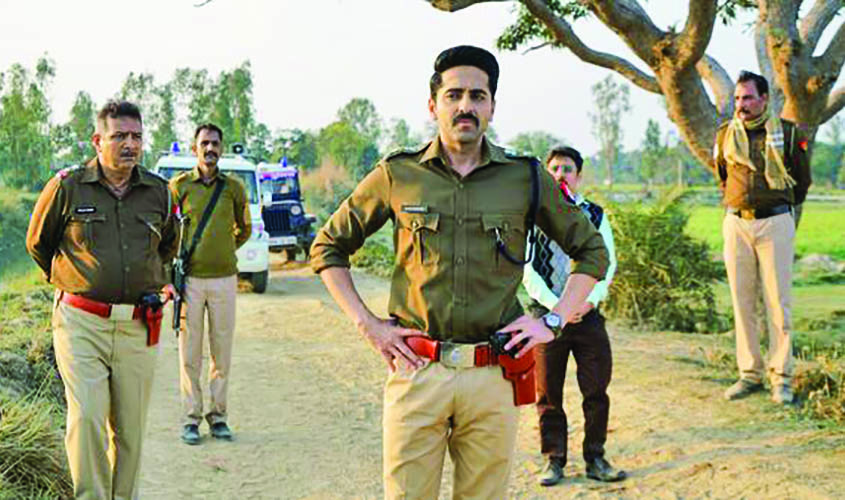Anubhav Sinha’s Article 15 tells the story of a police officer’s fight against the society and the system amidst widespread inequality and prejudice. It stars Ayushmann Khurrana, Manoj Pahwa, Kumud Mishra, Sayani Gupta, Mohammed Zeeshan Ayyub, and Nassar in pivotal roles. The film’s premise is set around the Article 15 of the Indian constitution which prohibits discrimination on the basis of caste, religion, race, gender, or place of birth. Article 15 takes inspiration from true events such as the 2014 Badaun gang rape and the 2016 Una flogging incident.
About 70 years after India became a Republic, the people
Anubhav Sinha’s command over the cinematic medium is evident in each and every scene of Article 15. He directs the film as an atmospheric police procedural and a hard hitting social drama. It is interesting how he chooses to start and end the film. In the film’s opening credits he pays tribute to the one and only Bob Dylan along with five of his favorite directors including Anurag Kashyap and Hansal Mehta. Article 15’s end credits feature a rap number titled ‘Shuru Karein Kya’ featuring Ayushmann Khurrana, Slow Cheeta, Dee MC, Kaam Bhaari, and Spitfire. The film’s cinematography, de-saturated color tone (perhaps to remind that a part of India still lives in the past) and sound design immensely adds to the film’s cinematic appeal. While the film’s entertainment quotient is quite low owing to its serious subject, the dialogues do succeed in packing a punch. If anything, the duration could have been shortened by 15-20 minutes to make the screenplay tighter. But even in its current form, Article 15 is quite watchable and makes for an engaging viewing experience, in particular for those viewers who are looking for something more than just plain escapism in their cinema.

